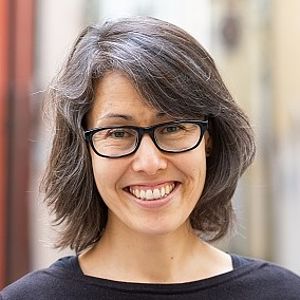I have always been interested in social movements as part of my academic work. Particularly movements that challenge the status quo and demand social justice – such as the black civil rights movement in the US. As a historian, I find it very exciting to delve into and compare the similarities and differences between past and present – in order to better understand our current situation.
Recently, the pandemic has shed more light on the way in which black people in particular are at a disadvantage and suffer discrimination as a result of structural racism. This is clear in light of the US’s social background: in contrast to just a few centuries ago, people of colour and white people are today equal before the law. Yet the reality is something different.
For example, poor people of colour have been affected especially hard by Covid-19 and, statistically speaking, are more likely to die from it. Even before the pandemic, unemployment in the black population was higher. People of colour are more likely to be employed in less secure jobs, so that due to the pandemic, they run a greater risk of losing not only their positions but also their health insurance. Many people of colour are key workers and are therefore exposed to risk at higher levels, in many areas with inadequate protective measures. In major cities like New York, Afro-American people and people of Latin American descent are more likely to live in relatively poor, densely populated districts as well as in social housing, where the risk of infection is likely to be greater.
The pandemic has moreover brought the role of the police into sharper focus: even before the latest protests, it was notable for instance that the American police made frequent arrests of people of colour and were prone to using violence in enforcing social distancing rules. From the beginning, structural violence has unfortunately been part and parcel of Afro-American history. It began with slavery. Most recently, its continued presence was made only too clear when the murder of George Floyd was captured on video.
This article was published in the 01/2020 edition of the Campus Passau Magazin.

Dr. Viola Huang
Was können wir aus Brüchen und Kontinuitäten in der US-Geschichte lernen und auf die Gegenwart übertragen?
Was können wir aus Brüchen und Kontinuitäten in der US-Geschichte lernen und auf die Gegenwart übertragen?
Die Historikerin Dr. Viola Huang (Ph. D. , Columbia University Teachers College) ist Mitarbeiterin an der Professur für Didaktik der Geschichte und im interdisziplinären Projekt SKILL.de. Sie betreibt einen Blog, in dem sie aktuelle Debatten um rassistische Gewalt aufgreift und historisch einordnet.
Do you have any questions on this topic? Feel free to write us: frag-die-wissenschaft@uni-passau.de - We will forward your questions to Professor Thies and publish his answers on this website.


